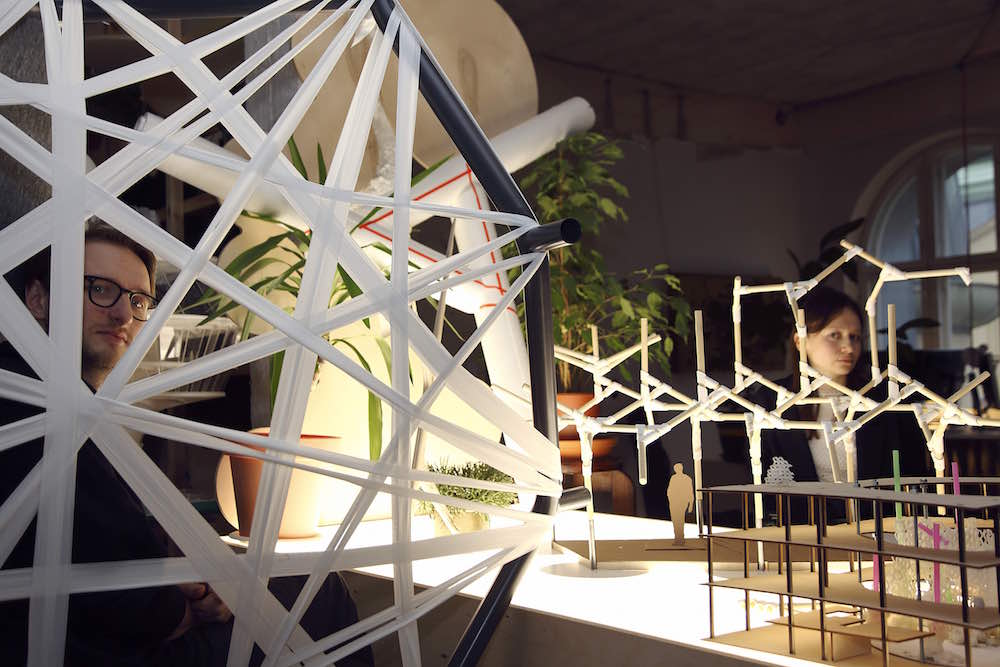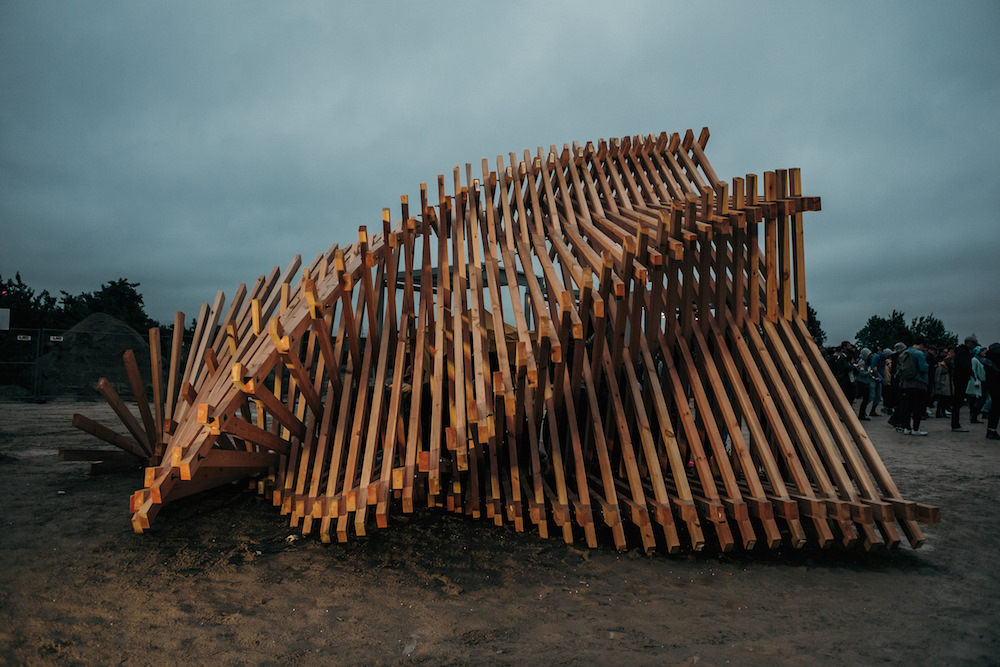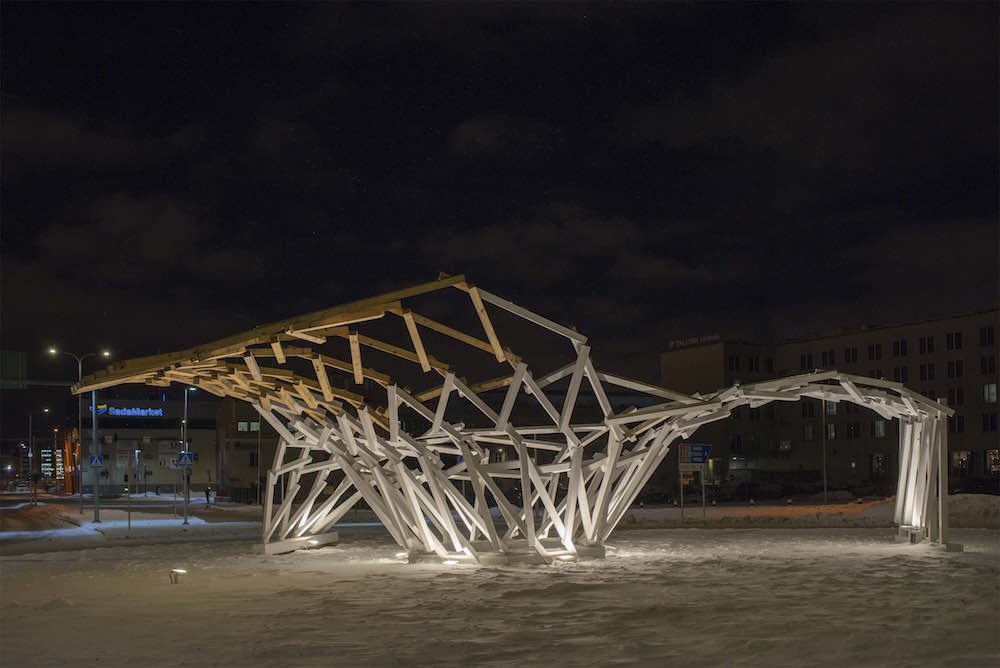A research project at the Estonian Academy of Arts brings together local timber house manufacturers, digitally skilled architects and engineers to collaborate for more efficient and structurally intelligent architecture.
Much of the intellect and energy invested in architectural education over the last ten years has gone into design and making. Most of the leading architecture universities have the orange creature, a Kuka arm, somewhere in a workshop. How to discuss a digital fabrication research conducted in situations where there is no in-house fabrication in universities and there are immediate limitations related to the building industry?
Estonia as a testraum
Small Estonia can be seen as a testraum, where local timber house manufacturers (with their CNC joinery machines) with digitally skilled architects and engineers are aiming to collaborate around a common platform for more efficient, flexible and structurally intelligent architecture. The reason behind this is simple: for almost a century, there have been few if any timber structures constructed in ex-Soviet urban environments. Driven mostly from the Soviet building restrictions, whole generations have been raised without any connection between renewable materials and architecture. Given the evolution on wood treatments, including fire protection and moisture-related treatments, constructional improvement in glulam making, the restrictions of the material have diminished and instead endless possibilities in construction opened.
Yet, the rebirth of the material in Estonia cannot be backward looking. Novel prospects – advanced machinery by timber manufacturers, new computational tools (e.g. algorithmic modelling) for material optimisation and structural calculations and above all, the ability to generate design strategies for new spatial qualities – can provide dataminded1 novel tectonics to begin with.
Renewable materials in digital fabrication
In view of the worldwide shortage of energy resources and the increasing concern for climate change, PART office (founded in 2015 together with Siim Tuksam) aims at radically advanced application of timber as a structural material considering economic and ecologic criteria in particular. In this respect, we study a highly integrated digital design and fabrication process for timber. The local concern of undesigned and under-valued log export has drawn greater attention of the public concerned about losing forests and its inhabitants. Considering the situation, PART research on timber is investigating how architects could add more value to the material through local design, allowing the manufacturers to be just the raw material provider.
Industry connected to digital fabrication
Our projects feature various scales of investigation, varying from furniture to open-air structures of 8 metres in height. Parametric design tools and a common design platform (Rhino Grasshopper), allowing engineers and architects work in the same program, have helped to establish highly complex and performative architectural forms without compromising on speed and cost of industrial manufacturers. The fourth dimension in architecture is time – if you can make custom solutions almost as time-efficient as standardised ones, the industry is willing to adapt. In the examples presented in this research, the Body Building Installation (constructed for Tallinn Architecture Biennale 2015) consumed exactly the same amount of timber elements and production time as a small detached house (80 m2) would for its structure, yet with the advantages of greater spans, height, cantilevers etc. Also the spatial qualities – fluid and round – created an understanding of various possibilities. And above all, the fact that all the used material would grow back in Estonian forests within 1.5 minutes made this urban installation truly intriguing.
Digital material fabrication
We argue that, compared to traditional craftsmanship, digital craftsmanship in the techno-cultural environment of Estonia offers more opportunities in terms of speed, building scale production and formal complexity. The isolation of the material qualities has to stop and become embedded in the design process. Our investigations with students at the Estonian Academy of Arts vary from light transparency and bending directions in veneer to civil projects such as electricity pylons of 42 meters. For the Elering pylon, we proposed acetylated wood technology, with the structural qualities (density, weight and strength) embedded already in the simulation process of the pylon’s dimensions and design. Aside from the end result, such an experimental approach without previous references has made s.c. demonstrators – installations to test certain methods – highly important in the daily practice. Therefore, mingling between the computational and physical space, we could create familiar yet complex spatial encounters combining traditional materials with current technologies and inherent aesthetics.
The algorithmic optimisation enabling all the previously mentioned possibilities is especially useful in collaboration projects such as construction marked by the constraints of the site or the collaborators’ input or constantly changing production machines. It is particularly useful when working with “living” material such as wood where the precision for efficient joinery has to be on millimetre level while the material is constantly reacting to the surroundings (e.g. moisture level). By using the 3D model parameter, we can make timber architecture once again approachable and the process from the idea to construction more feasible.
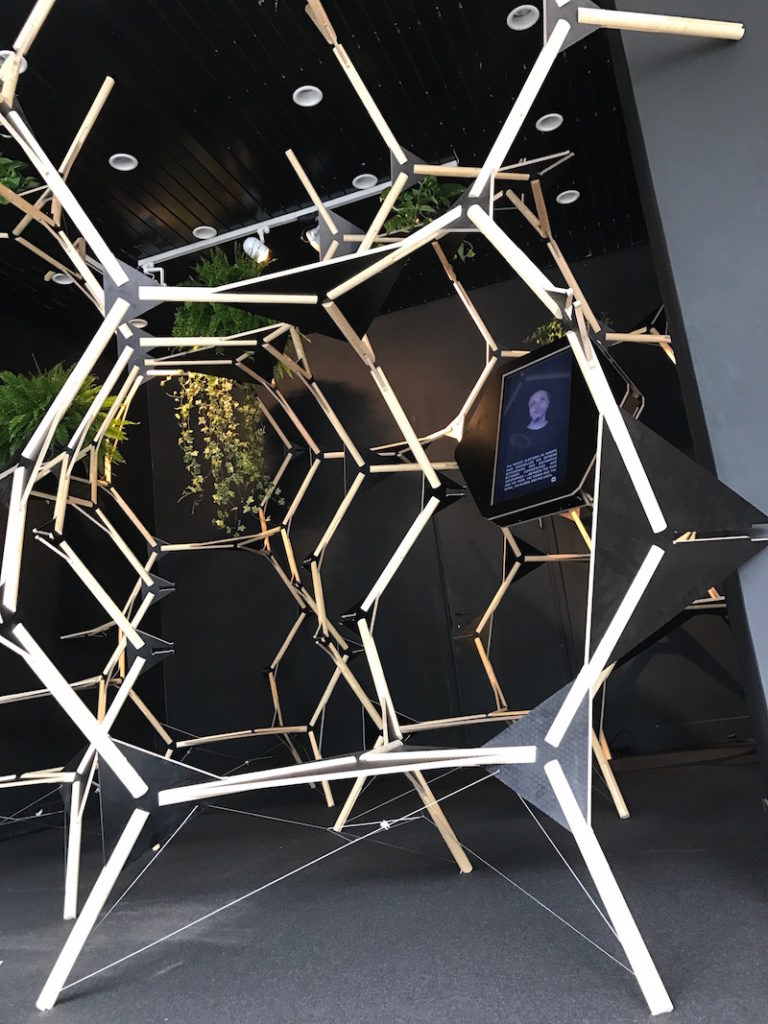
It’s all about design
Those various projects could potentially be implemented with other types of CNC machines and technologies, but the research in question at PART is primarily focused on design methods. Experiments so far should be understood as research into design methodology, rather than as research into production and manufacturing as in case of engineering tasks. Repurposing industry machines towards creating complex, adaptive and structurally intelligent architecture could help us to overcome faster the modernist physical space of standardised precast concrete. The use of algorithmic optimisation as a tool and the local context as parametric criteria provides crucial arguments for developing a contemporary design language for algorithmic timber architecture.
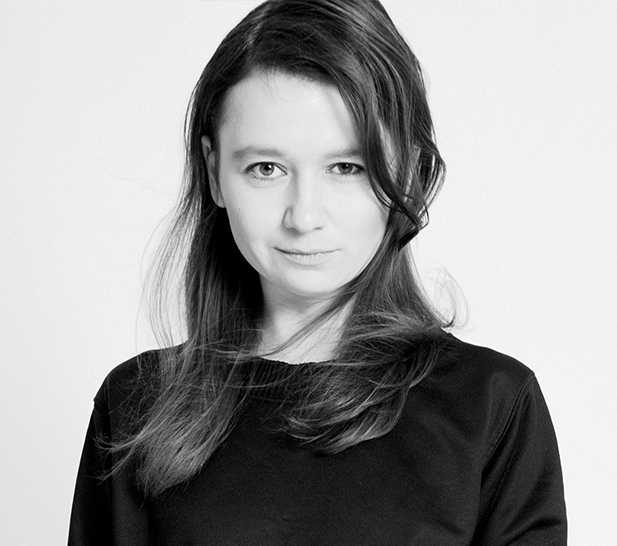
SILLE PIHLAK is a co-founder of practice PART, a doctoral student at the Faculty of Architecture of the Estonian Academy of Arts, the curator of the Open Lecture Series and junior researcher focussing on the innovation of timber architecture and creating added value to the material by means of contemporary digital design and production methods.
HEADER photo by Reio Avaste.
PUBLISHED in Maja’s 2018 spring edition (No 93).
1 Using computational strategies to provide new geometric outputs.

